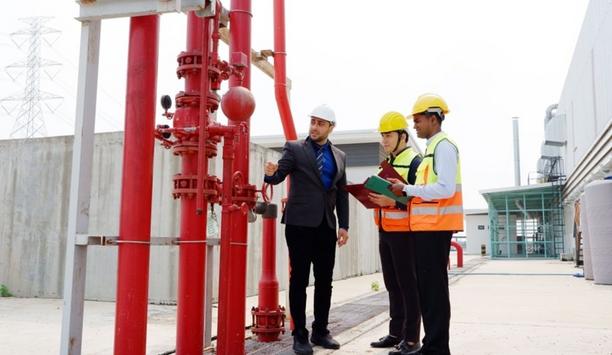At Twiceme Technology, they believe in the power of being a cog in the big, globe-spanning wheel of safety. They like to talk about something they call the Ecosystem of Safety - a phenomenon with enormous potential in terms of making equipment and apparel safer, but which perhaps not many people think about.
In this piece, they will explain what they mean by calling it an ecosystem, and what this means for the future of smart safety in personal protective equipment.
History of Bike Helmets
Personal protective equipment has long been negated and truly missing innovation, meaning it was either not used at all or when used, it did not meet its full potential. Take the bike helmet for example.
The use of this helmet was not widespread either, instead, it was almost only used by racing cyclists
The first iteration of a “helmet” meant to keep you safe when riding a bike, was no more than some leather padding with little protection against scratches and next to no protection from the actual impact. The use of this helmet was not widespread either, instead, it was almost only used by racing cyclists.
Safety Equipment
Much has changed since then. Materials and the manufacturing process have improved, meaning a much safer riding experience for all. The public view of helmets has also changed. They can see a majority of hobby bikers and commuters wearing a helmets.
In 1999 researchers from the University of Washington found that wearing a helmet reduced the risk of head or brain injury by approximately two‐thirds or more, regardless of whether or not the crash involved a motor vehicle. They haven’t seen any big innovations in bike helmets being widely used by a majority of bikers in many years. They can see the same thing in the history of almost every other protective equipment. It starts off being quite ineffective and not worn by a majority, then improvements to the design lead to more and more people wearing the equipment making them safer. But after some time, innovation stagnates.
Smart Safety Features
Smart safety features integrated into equipment have been the newest and biggest improvement
Until recently, smart safety features integrated into equipment have been the newest and biggest improvement to safety equipment in recent years.
These innovations have made the equipment smart, meaning it can either allow the equipment to communicate with other technologies or drastically improve the actual safety of the equipment without any big changes in material or process. This is what the ecosystem of safety entails!
What is the Ecosystem of Safety?
The Ecosystem of Safety is what they would call the full package of ingredients working to improve the safety of equipment - brands that are working to innovate safety features, all by different means. The ecosystem of safety refers to the collaboration between these brands, aiming for a safer equipment user.
Twiceme:
Is a technology integrated into equipment that allows to upload of safety information to the equipment via the Twiceme app. Info such as medical ID, personal identifiers, ICE contacts, insurance details and exact coordinates can easily be accessed by the first person on the scene in the event of an emergency, allowing for a more efficient emergency response. All without the need for cell service or charging the equipment. Twiceme is read by placing an NFC-enabled smartphone on the Twiceme symbol.
RECCO:
Is a piece of tech that makes them searchable on the mountain to help rescuers during search and rescue missions. The tech consists of a so-called reflector and is often integrated into equipment. As rescuers are looking for them, they use a special search beacon that is reflected on the tech in the equipment.
Koroyd:
Are tubes built inside helmets to reduce the impact from both angeled and direct impacts. They do this by crumbling upon impact, mitigating some of the forces that would otherwise be transferred directly to the head.
MIPS:
In a similar vein, MIPS is also built inside helmets to reduce the rotational force often seen in impacts against the head. The MIPS technology relies on a low-friction layer inside the helmet allowing the head a degree of rotation which in some cases can be the difference between life and death. MIPS can be integrated into a helmet together with Koroyd, allowing for improved safety.
The Timeline of the Ecosystem
Together the products from these ingredient brands help each other to truly elevate the safety
The timeline central to this ecosystem looks like this: They are out on an adventure, geared with all the before-mentioned ingredient brands. But disaster strikes. The first leg of the timeline starts with the two impact-related technologies. Koroyd and MIPS negate some of the impacts but leave them knocked out. They are found with help from the RECCO reflectors in the helmet. While they are being rescued the Twiceme integrated equipment helps the rescue professionals with their safety information, allowing them to make the right decisions faster.
This is the gist of the ecosystem. Together the products from these ingredient brands help each other to truly elevate the safety of the wearer. On their own, they might only deliver specific types of protection. The whole in this case is greater than any of their parts.
They can have all the best and smartest equipment, but the safest option is always to avoid even being in an accident. That’s why the preparation phase and valuable safety information also is a big part of the timeline of the ecosystem. Make sure they have the information they need and have all the equipment set up before any adventure or work-related task that can result in an accident.
Call to Action
To consumers and corporations alike. Take a look at safety in a more holistic view, and take into consideration everything from the safety of the helmet to how they're feeling that day and how it might affect safety. Teach and learn correct safety protocols. Like they previously said. On their own, these factors might only play a partial role in the safety but it is the entire ecosystem of safety that counts.
To recap, the safety equipment market has seen incredible improvements since its earliest uses. They are seeing some great improvements towards smart and even safer equipment. Let them not forget about the ecosystem of safety, let them use the tools they are given and synergize them to achieve optimal safety for all.














